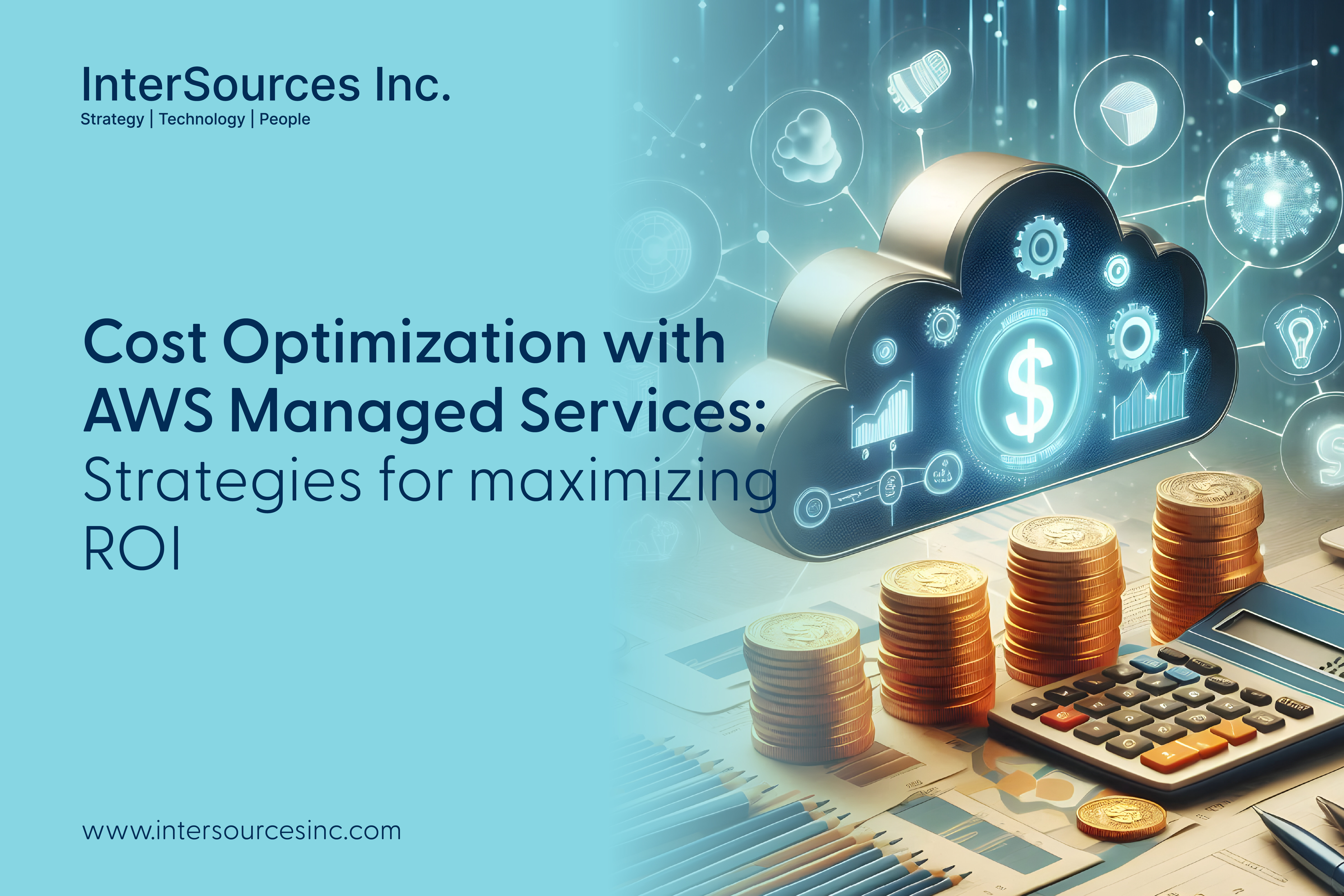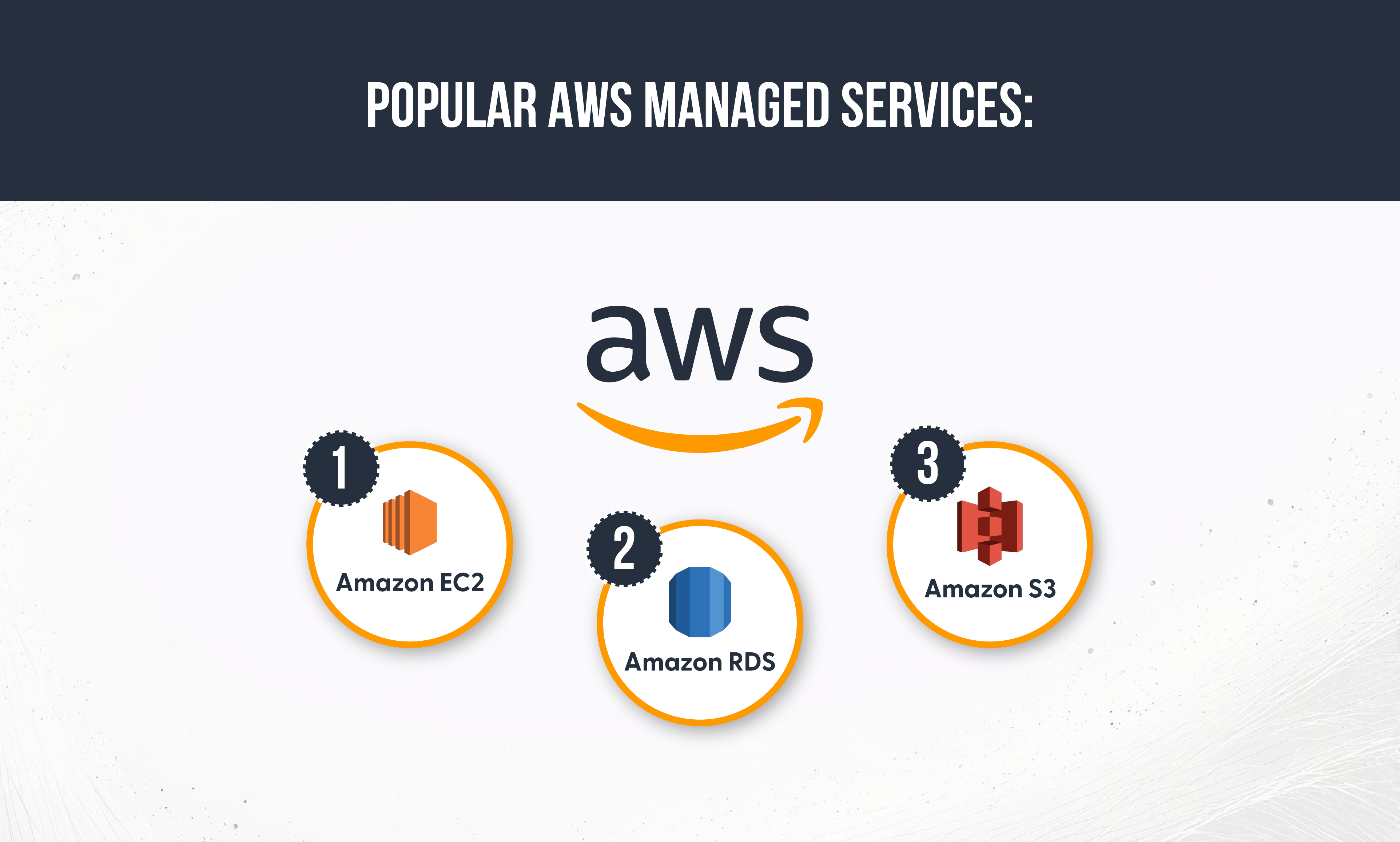← All Blogs

Cost Optimization with AWS Managed Services: Strategies for maximizing ROI
Maximizing your return on investment (ROI) through effective AWS cost management is essential as businesses adopt cloud services. To minimize unnecessary spending and boost efficiency, refining AWS resource usage is key. Utilizing tools like AWS Cost Explorer, alongside implementing strategic cost-saving measures, can significantly improve cost optimization.
For startups, where budgets are often tighter, cloud cost management becomes even more critical. This guide will explore essential strategies for managing AWS costs and highlight the advantages of cloud migration for startups.
Why AWS Managed Services is Key to Cost Optimization
It changes the world of managing IT infrastructure for organizations, but it is no silver bullet if one hopes to save money by merely shifting infrastructure to the cloud. Such factors as lack of management regarding cloud deployments can drive wild spending. That is where AWS Managed Services step in to help deliver automation, monitoring, and optimization tools and strategies for cloud use in terms of performance and cost efficiency.
The goal? To help organizations scale without sacrificing security or incurring unnecessary costs.
Understanding AWS Managed Services
All of this starts with knowing what AWS Managed Services are. AWS Managed Services presents an all-encompassing solution for operating a cloud platform consisting of security monitoring and all aspects of infrastructure management and data backup and recovery.
Compared to conventional IT infrastructures in which much money is spent on hardware and personnel, AWS Managed Services have no associated overhead, require little in-house expertise, and deliver truly on-demand scalability.
Popular AWS Managed Services:

Amazon EC2: elastic computing power for virtually any workload.
Amazon RDS: fully managed relational database services.
Amazon S3: scalable storage solutions with flexible pricing options.
All these services enable an organization to only pay for what is used, which can in itself form the basis for attaining maximum cost savings.
Strategies for Cost Optimization
Let's break down actionable strategies for cost optimization using AWS Managed Services.
Rightsizing Instances
One of the biggest mistakes businesses make is over-provisioning resources. Selecting the wrong instance type can lead to significant waste.
Use AWS Trusted Advisor: This tool identifies underutilized or oversized instances and offers recommendations for optimization.
Monitor Performance: Regularly assess instance performance and scale up or down as necessary to ensure you’re not overpaying for unused resources.
Best Practice: Match instance types to your actual workload needs. For example, use compute-optimized instances for heavy workloads and memory-optimized instances for database operations.
Businesses often see a 10-30% cost reduction by simply rightsizing their instances.
1. Leveraging Reserved Instances and Savings Plans
Long-term cloud usage? Save big by committing to reserved instances or savings plans.
Reserved Instances (RI): These offer discounts of up to 72% compared to on-demand pricing. By committing to a one- or three-year term, organizations can lock in substantial savings.
Savings Plans: More flexible than RIs, savings plans allow cost reductions across multiple services, making them ideal for dynamic environments.
2. Optimizing Storage
Storage can quickly become a cost sink, especially if you’re not actively managing it.
Lifecycle Policies: Use AWS S3's lifecycle policies to automatically transition data to lower-cost storage tiers (e.g., Glacier) or delete data when it’s no longer needed.
Compression and Deduplication: Compressing data or eliminating duplicate files can lower storage needs, which directly impacts your costs.
Delete Unnecessary Data: Review stored data regularly to ensure that old or irrelevant information isn’t hogging costly storage resources.
By optimizing storage practices, businesses can typically reduce storage costs by 20-50%.
3. Utilizing Spot Instances
Spot Instances are ideal for non-critical, flexible workloads. They allow companies to purchase unused EC2 capacity at a significantly lower rate (up to 90% off the standard pricing).
Benefits: Substantial cost savings for workloads that can tolerate interruptions, such as batch processing or big data analytics.
Risks: Spot instances can be terminated by AWS when demand spikes, so they are best suited for workloads that can handle interruptions.
4. Taking Advantage of the AWS Free Tier and Cost-Effective Services
AWS offers several services that are either free or highly cost-efficient.
AWS Free Tier: New users can enjoy the AWS Free Tier for the first 12 months, which includes 750 hours per month of EC2 usage and 5GB of standard S3 storage.
AWS Lambda: Serverless computing can drastically reduce costs for microservices by allowing businesses to pay only for the compute time consumed.
Amazon Aurora: Provides a cost-effective alternative to traditional databases without sacrificing performance or scalability.
Utilizing these services can help reduce operating expenses without compromising on performance.
Case Studies: Real-World Successes
E-commerce Giant
An e-commerce company struggled with managing variable demand, leading to escalating cloud costs. By implementing Reserved Instances and rightsizing EC2 instances, they reduced their overall AWS bill by 35%. Lifecycle policies and data deduplication further cut their storage expenses by 25%.
Global Tech Firm
A global tech firm used Spot Instances to handle large-scale batch processing workloads, saving up to 70% in computing costs. By integrating AWS Trusted Advisor, they continually monitored and adjusted their infrastructure, avoiding waste.
Best Practices:
Regular Monitoring: Constantly evaluate usage with AWS Cost Explorer and Trusted Advisor.
Automation: Use tools like AWS Auto Scaling to optimize workloads dynamically.
Continuous Improvement: Reassess strategies every quarter to adapt to evolving business needs.
Conclusion: Maximizing ROI with AWS Managed Services
Cost optimization is not a one-time task—it’s an ongoing process. By implementing the strategies discussed—such as rightsizing instances, leveraging reserved and spot instances, optimizing storage, and using cost-effective services—you can substantially lower your AWS expenses while enhancing performance.
At InterSources Inc., we specialize in helping businesses unlock the full potential of AWS Managed Services. Our tailored approach ensures that your cloud environment is continuously fine-tuned for cost-efficiency and scalability. Whether you're a startup managing a lean budget or an enterprise seeking operational excellence, our expertise will help you maximize your ROI, reduce unnecessary costs, and stay ahead of evolving cloud needs.
Explore our AWS Managed Services to elevate your AWS strategy and drive lasting cost savings.
